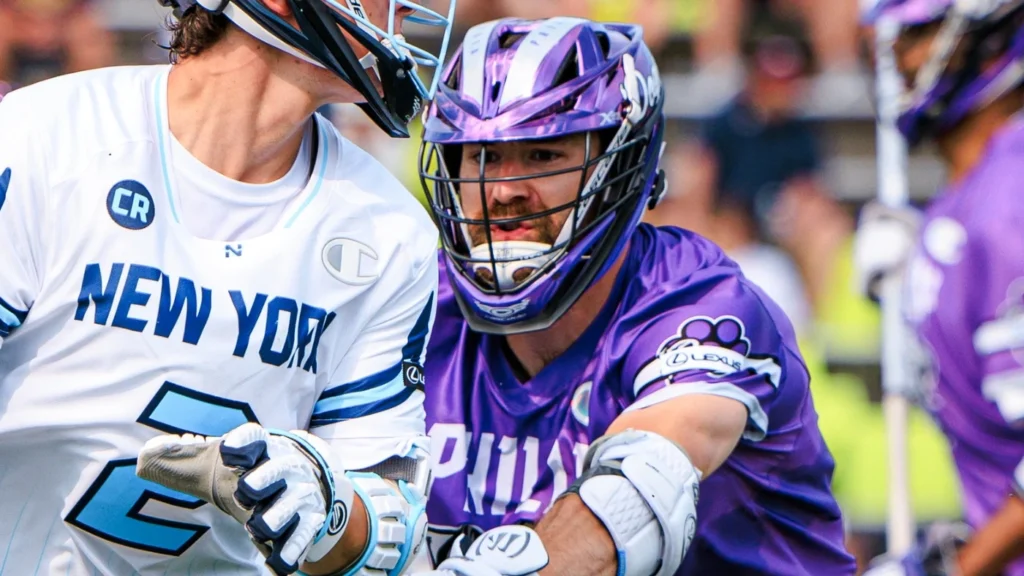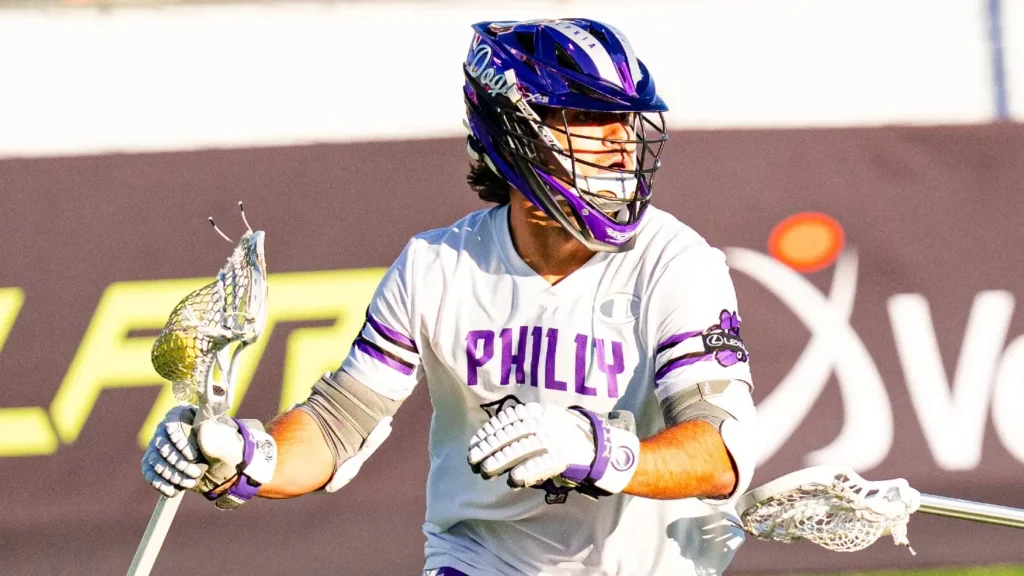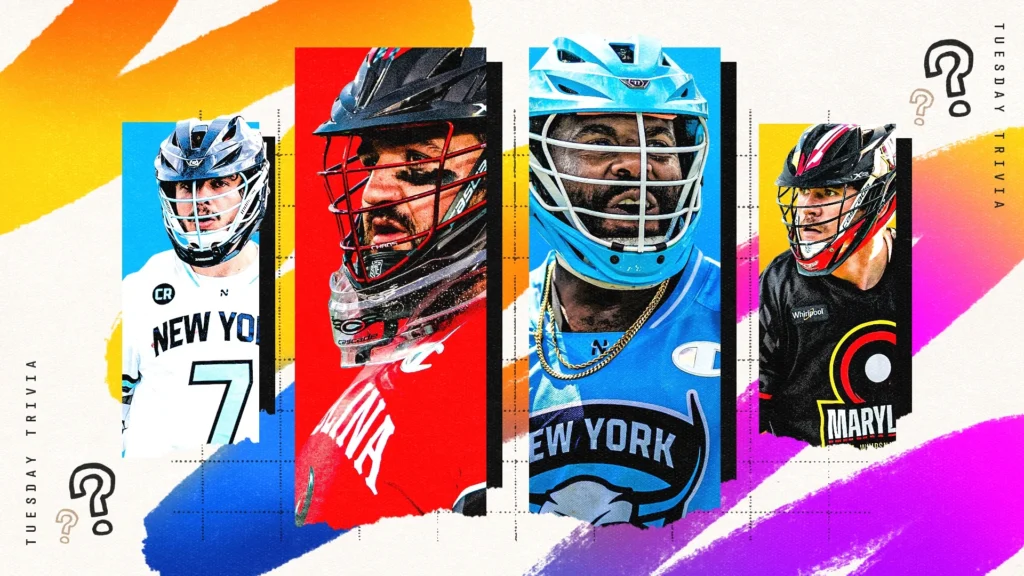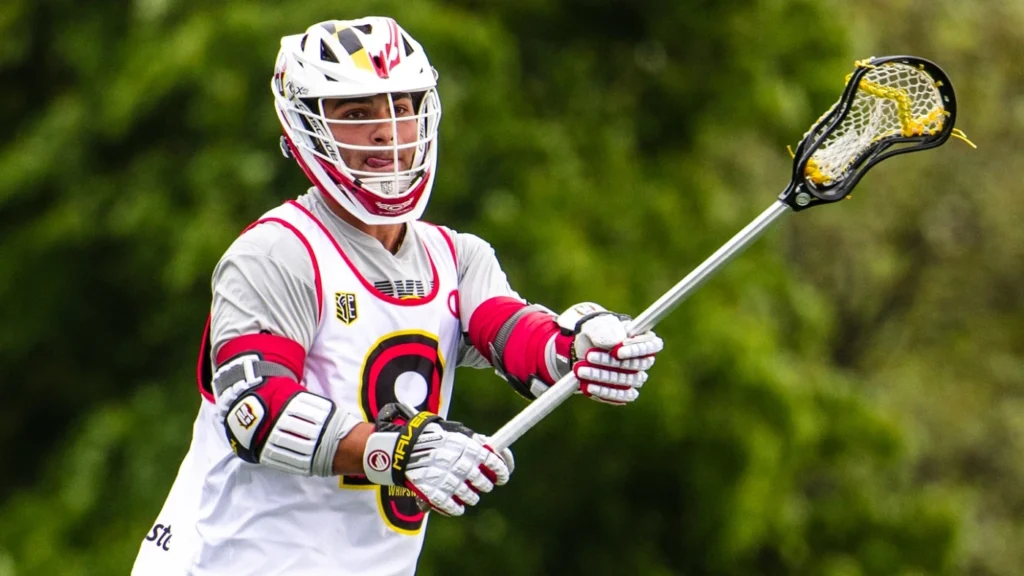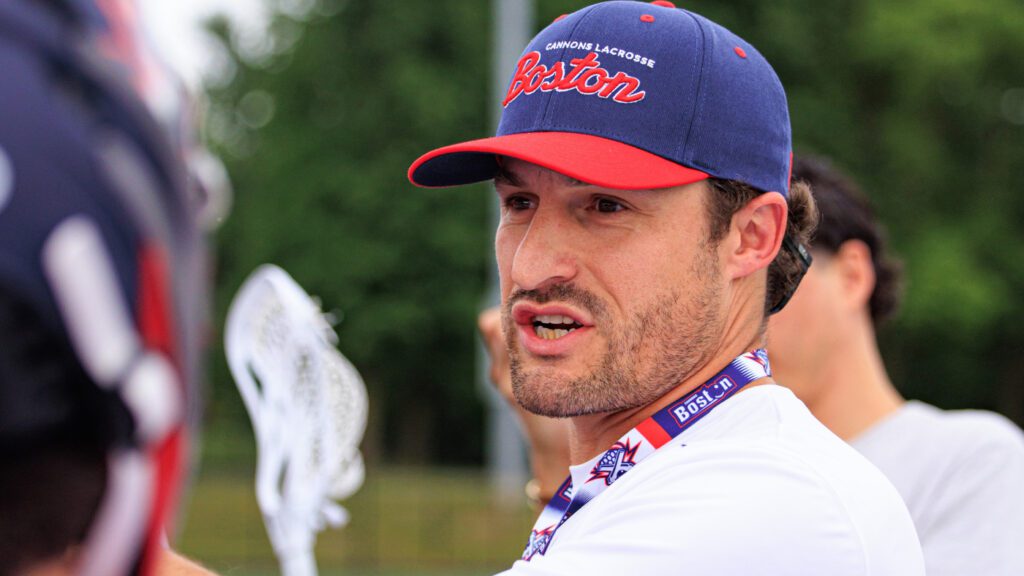
Kyle Hartzell’s plan for the Cannons’ close defense
By Sarah Griffin | May 28, 2024
Play fast. Play together. Disrupt. Outwork everyone.
That’s Boston Cannons defensive coordinator Kyle Hartzell’s philosophy for his group.
In his first season coaching at the professional level, Hartzell provides unique insight as the conductor of the team’s defensive unit. Just last year he was one of the guiding veteran voices on the field and in the locker room as a long-stick midfielder for the Cannons.
Shortly after their semifinals loss to the Waterdogs, Hartzell announced his retirement from professional lacrosse. While he may not step on the field as a player again, it didn’t take long for him to return to the PLL. The Cannons announced him as their new defensive coordinator in April.
Now, with training camp in full swing, Hartzell and the Cannons have their sights set on their season opener versus the New York Atlas this Saturday in Albany. So, what’s their plan?
Last season
“As a whole, we were pretty good covering the ball [last season],” Hartzell told me when I asked about areas of focus for his close defense in training camp. “So I think one area we’re focusing on in camp is off-ball and knowing where the ball is at all times. Sometimes in this league, guys can get locked up on their guy and not worry so much about the five around them.”
Jack Kielty, Jake Pulver, Cade van Raaphorst and Max Wayne indeed did a fine job on the Cannons’ close defense in 2023 covering the ball and playing their matchups one-on-one.
As their top defenseman, Kielty in particular covered teams’ top attackmen in every matchup. Last season when guarded by him, the Philadelphia Waterdogs’ Michael Sowers shot 0-for-7, the California Redwoods’ Rob Pannell went 0-for-4, and New York’s Jeff Teat was held to just three total shots against Kielty in the Cannons’ two regular-season meetings with the Atlas.
But Cannons opponents capitalized on their off-ball play, resulting in the second-most shots allowed (503) in the league.
Certainly, having Colin Kirst between the pipes made this not as much of an issue as it could have been, but there was definitely room for improvement on Boston’s backend in terms of playing as a unit.
“We’re not trying to get ‘slide happy’ by any means, but cover more space off the ball and play more team defense,” Hartzell said.
New additions
Hartzell emphasized two aspects of Boston’s off-ball approach at close defense: stretching out in their end and disrupt, disrupt, disrupt.
Luckily for the Cannons, they added two near-perfect fits to execute their plan.
Bryce Young
Boston acquired Young (and midfielder Connor Kirst) in a trade with the Maryland Whipsnakes in November. Young had been a cornerstone of the Whipsnakes’ close defense since the league’s inception. Now with a new team for the first time in his PLL career, he fulfills everything the Cannons are looking for in terms of off-ball play and more.
“He’s been a top-five close D guy since the PLL has been in existence, and he does it in a quiet manner,” Hartzell said. “He’s a really good off-ball guy especially coming from the University of Maryland’s system.”
I talked to Young’s longtime teammate Matt Dunn back in December 2022 about the defender.
“Bryce is a really complementary player,” Dunn said. “He’s physical and fills gaps well, he’s good at off-ball spacing, and he anticipates plays really well. … He’s about his business, he’s fundamental, and he’s appropriately aggressive.”
Not only does he check off every box needed to be the off-ball defender Hartzell envisions, but Young’s skill set also makes him an ideal fit to slot into the Cannons’ close defensive unit.
That, of course, coincides with another new addition this past offseason: Garrett Epple.
Garrett Epple
The reigning Dave Pietramala Defensive Player of the Year, “Garrett Epple” could be a synonym for the word “disrupt.”
“While there may be individuals with superior coverage skills and stronger on-field communication abilities, no defender can match the disruptiveness of Garrett Epple,” Redwoods beat writer Jerome Taylor wrote last summer.
In his eighth professional season, the veteran’s game only seems to get better and better. He’s the most disruptive takeaway defenseman. On-ball or off-ball, he can anticipate dodges and passes better than anyone else on the field – a testament to his lacrosse IQ.
Beyond that, Epple is another veteran leader for this team as it continues to develop Cannons culture.
“Playing with Garrett on the Redwoods, I got to experience what he’s like in the locker room,” Hartzell said. “He’s just an amazing, unbelievable leader to add to this group.”
“Play together, outwork everyone”
Play fast. Play together. Disrupt. Outwork everyone. Hartzell has all the right pieces on his close defense to fulfill his philosophy.
Even without having yet seen this group all play together in a game, I know they can play fast and I know they can disrupt their opponents. Playing together and outworking everyone? That all comes down to buy-in from the players.
If there’s anything I’ve learned from my conversations not only with Hartzell, but with every member of the organization, Cannons culture means doing everything you can for the team, and as a team. Playing together and outworking everyone should come naturally for the Cannons defense.


